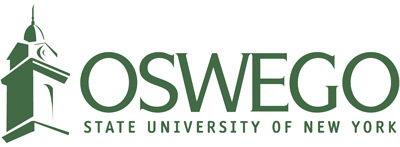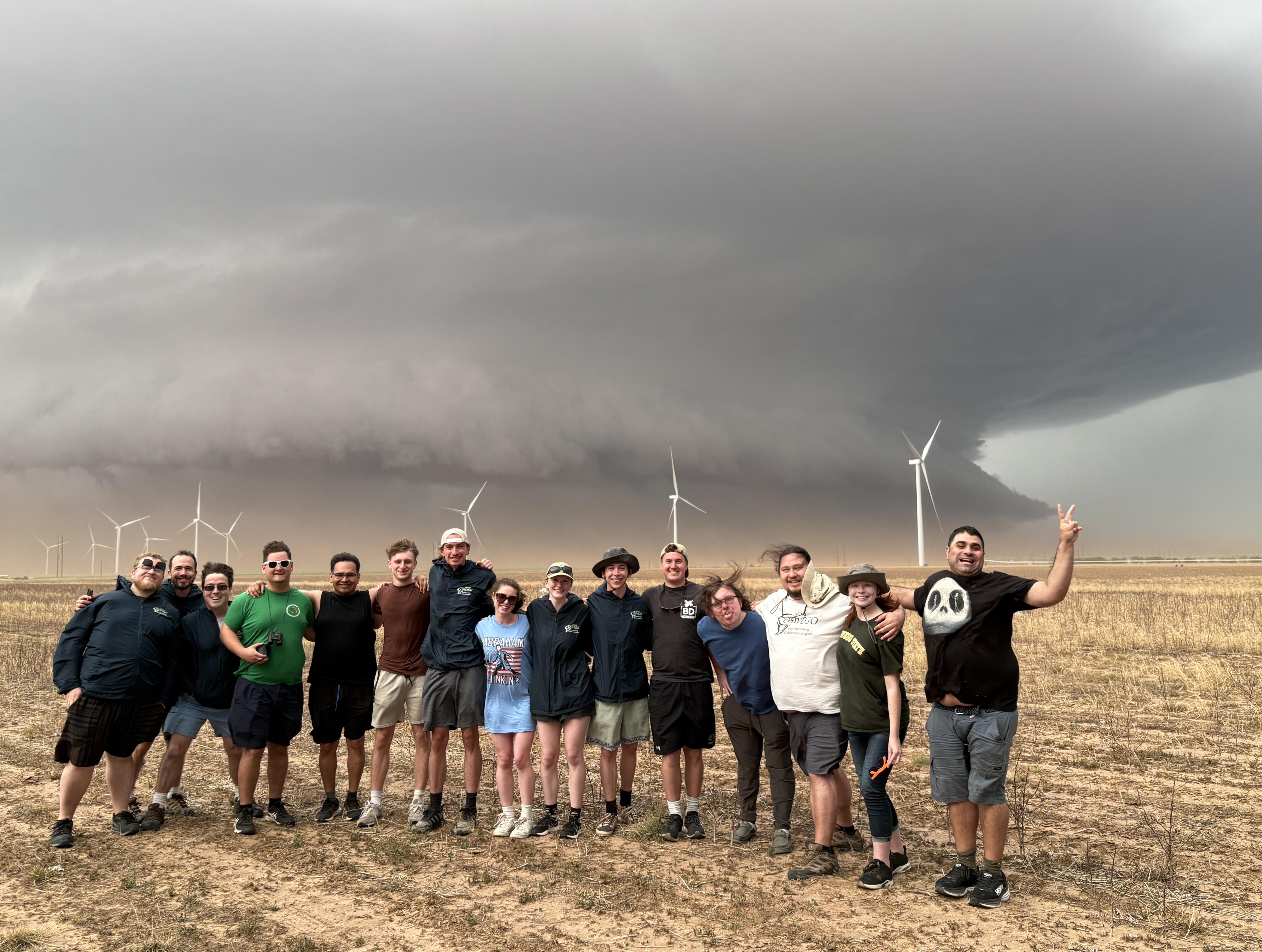SUNY Oswego storm-chasing students pose (from a safe distance) with a supercell near Tahoka, Texas, on June 6 -- a day they witnessed a rare double tornado. (Photo by Scott Steiger)
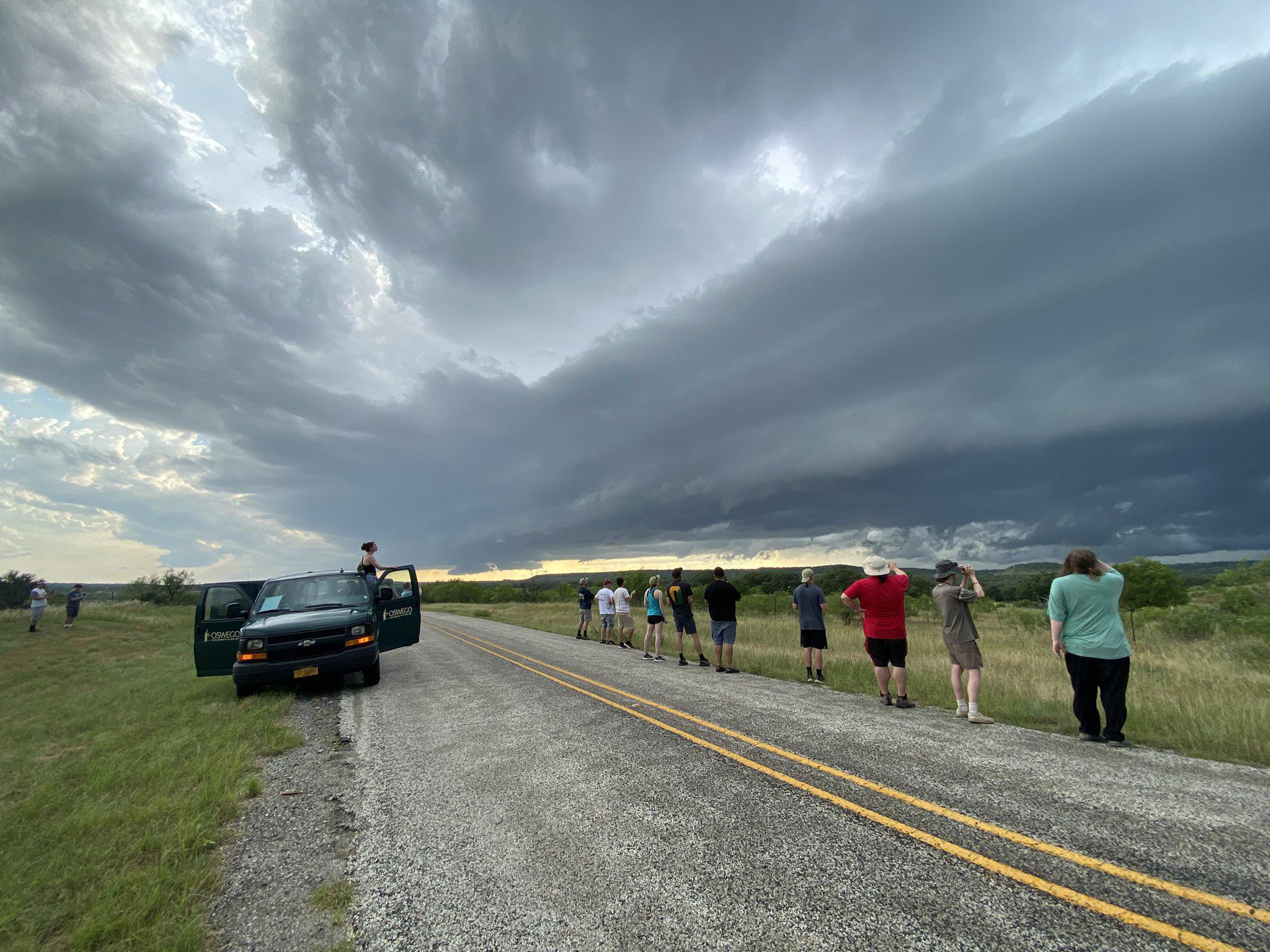
SUNY Oswego storm chasers observe a supercell near Wichita Falls, Texas, on July 3. (Photo courtesy of x.com/oswegochasers)
A SUNY Oswego storm-chasing class saw and tracked several twisters through Tornado Alley earlier this summer in an intense real-life classroom experience.
Highlights included witnessing a double tornado –- an EF-2 storm nearly a mile wide –- near Morton, Texas, on June 5; two tornadoes the next day near Ropesville, Texas; and multiple twisters throughout their travels.
“From start to finish, it was great,” said meteorology professor Scott Steiger, who launched the Oswego Chasers program in 2007, and it has run most years since. “Even when we don’t see tornadoes, it’s a great learning experience, but this was very impressive. We had a lot of chase days, we saw a lot of different things, a lot of different phenomena.”
“The trip definitely exceeded my expectations,” said Sarah Gryskewicz, who will be a senior meteorology major in the fall. “I did not necessarily expect to see five or six tornadoes. My goal was to see some great structures I’ve never seen in the Northeast in flat terrain. The lightning shows out there are just amazing.”
Zoe Bush, a May 2025 meteorology graduate who will head to Texas A&M University to pursue her master’s degree, made her second trip in the program, this time as a teaching assistant. Beyond tracking storms via radar and classroom knowledge, she noted that the sensory experience is a big part of being in this living laboratory.
“One of the coolest things is feeling the inflow of a storm, the air rushing into the storm,” Bush said. “You don’t get that out here and at points it will knock you off your feet, it’s so powerful.”
The trip started on May 27, when the team of 12 students and four instructors departed Oswego along Lake Ontario, returning home June 10. Every morning, the chasers have a meeting where they determine where the best chances of tornadoes are within driving distance, and then set off to study and potentially observe some extreme weather from a safe distance.
Through real-time field observation, launching weather balloons and evaluating their forecasts, students earn experience beyond what is available with even the best classroom equipment.
Students were split into three groups in charge of different aspects of the trip: the logistics team, the equipment team and the forecast team. Since teams are set up in a rotation, students are able to experience each team.
The forecast team studies atmospheric conditions each morning and determines where the group heads next. The logistics team is in charge of navigation, filling the van with gas, cleaning the windows and other tasks. The equipment team is in charge of the weather balloons, including filling them with helium, launching, attaching the radiosonde device and observation.
They also kept the world informed by documenting their chase with photos and videos on x.com/oswegochasers.
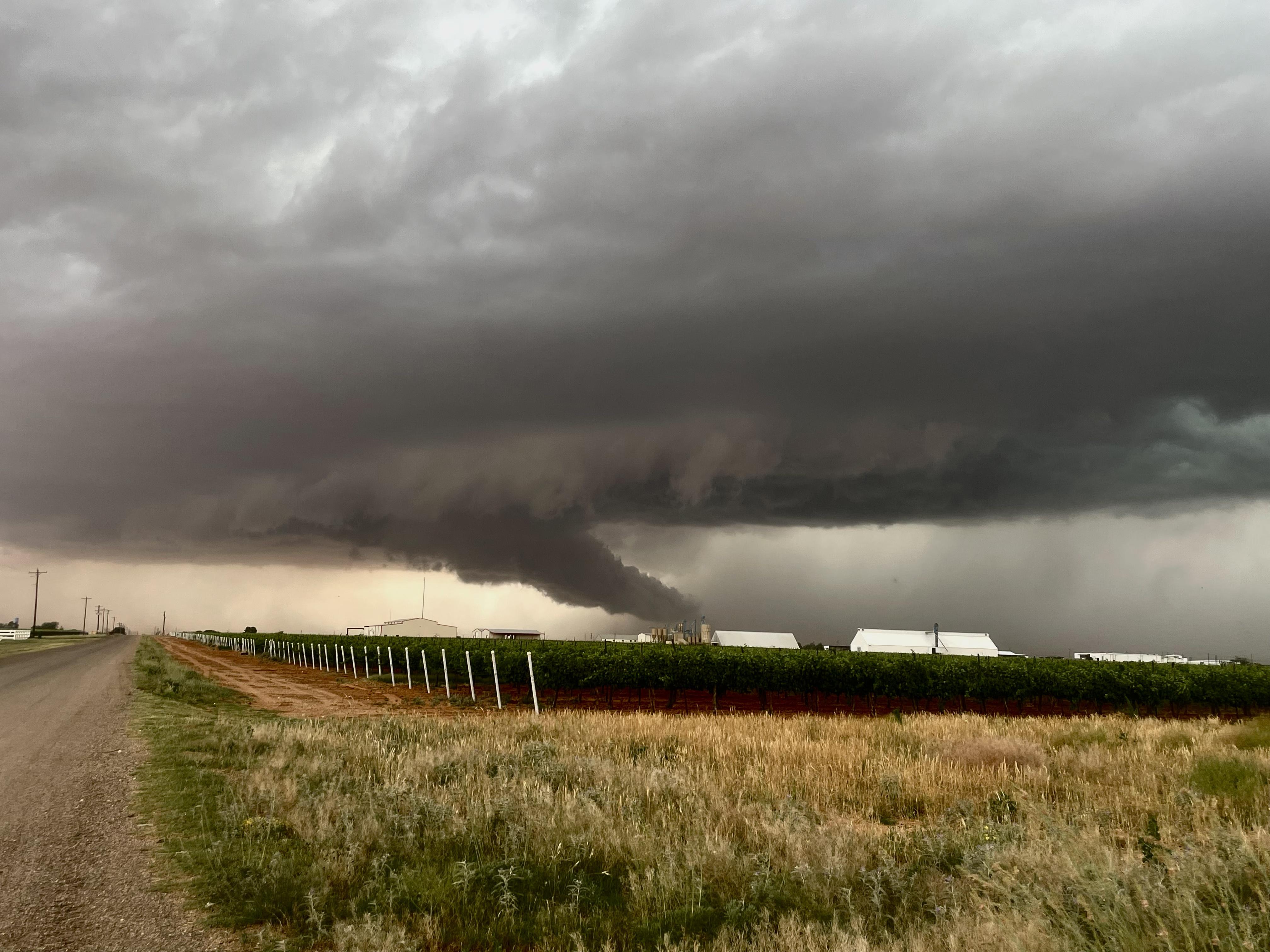
A funnel forms on a massive supercell near Brownfield, Texas, on May 29. (Photo by Sarah Gryskewicz)
‘Really impressive’ learning
“The students’ learning was really impressive,” Steiger said. “I have them lead forecast discussions every morning, where we’re going to target and why. And by the second half of the trip they were speaking really intelligently and I just could tell how much they learned. As a teacher, that was amazing.”
Gryskewicz, who hails from Pennsylvania, and Bush, from Minnesota, both discovered Oswego’s nationally known meteorology program via the storm chasing program, and going through it only strengthened their commitment to working in this field.
“I’m really interested in atmospheric research and would like to go to grad school,” Gryskewicz said. “It’s really encouraged and driven more my passion for the field by seeing the impact of these systems on towns. We saw the Lubbock, Texas, tornado, and saw the damage after that. It was a humbling experience and also just encouraged me to enter the field to do good, and to contribute back by saving lives.”
Bush noted how classes prepared the team for what they would experience but they combined knowledge with ever-improving field instincts during their chases. Being an instructor for this trip, driving the chase van and sharing knowledge with undergraduate students, also helps toward her future.
“Helping to lead a class is going to help me in the future at Texas A&M when I have to teach undergrads and lab classes,” Bush noted. “They also have a storm chasing class at Texas A&M and I’m hoping I can find a role with that after doing this trip twice for Oswego.”
“The laboratory for a meteorologist is outside,” Steiger said. “You have to go outside to learn the weather. I would love to get separate funding to make it free for all meteorology majors.”
Students credited Steiger’s passion and knowledge for helping participants get the most out of this trip.
“Dr. Steiger’s always been a great teacher in a classroom setting,” Gryskewicz noted. “In the field, I was able to learn a lot more from him. He would explain things thoroughly and make time for any questions. He’s always there for students, really encouraging us to be motivated, to learn and to be curious.”
“He’s very good about explaining very complicated information involving meteorology,” Bush added. “Being out in the field, he constantly points out what’s happening and relates it back to the classroom so you have that classroom-field connection. He puts it out there that any question is a good question.”
They also enjoyed seeing how excited Steiger and their classmates were when they realized they came across the double tornado –- a smaller twister orbiting a huge wedge tornado on June 5.
“I’ve been chasing for 18 years and have seen maybe two wedge tornadoes,” Steiger said of the widest variant one might experience. “I saw it drop a cone tornado, the traditional tornado shape, before realizing it was a wedge tornado with a satellite tornado. That was amazing. It was very exciting, very much a ‘wow’ moment.”
In addition, the team pursued two EF-1 tornadoes in the Brownfield-Lubbock-Lamesa area of northwest Texas; a distant tornado near Tucumcari, New Mexico; and a possible tornado south of Plains, Kansas. They also experienced intense dust formations, spectacular lightning and large hail.
But for Steiger, beyond the active chases, the students’ enthusiasm, learning and great memories truly made this year’s chase rewarding.
“To hear students say this was a day they’ll never forget for the rest of their lives, or this was the best trip of their lives, or that it encouraged them to stay in the field of meteorology, or that made them want to go to graduate school to do research – that to a teacher is the golden ticket,” Steiger said.
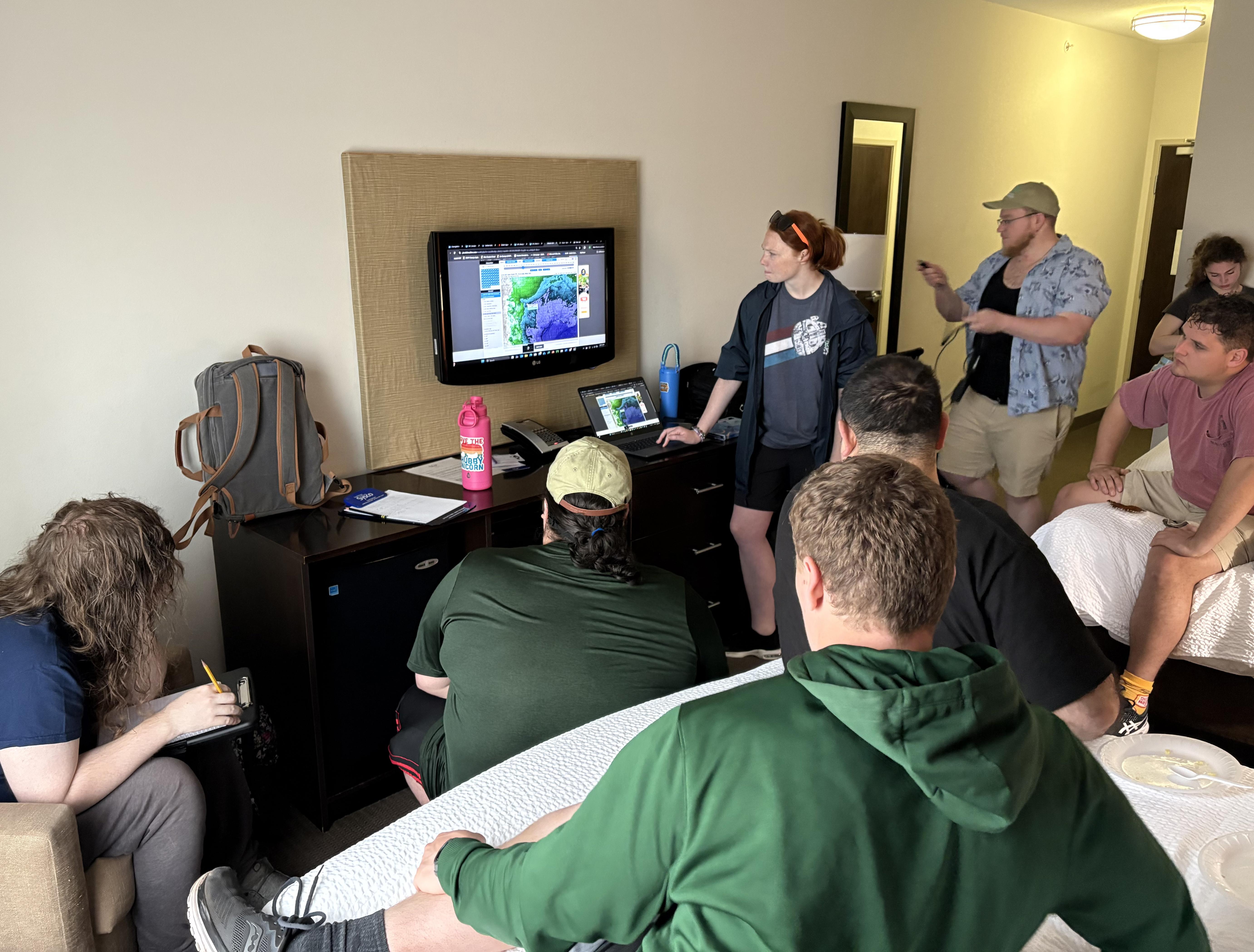
SUNY Oswego storm chasers gather in a hotel room on May 29 to discuss which weather conditions will be most favorable for potential tornadic activity. (Photo by Scott Steiger)
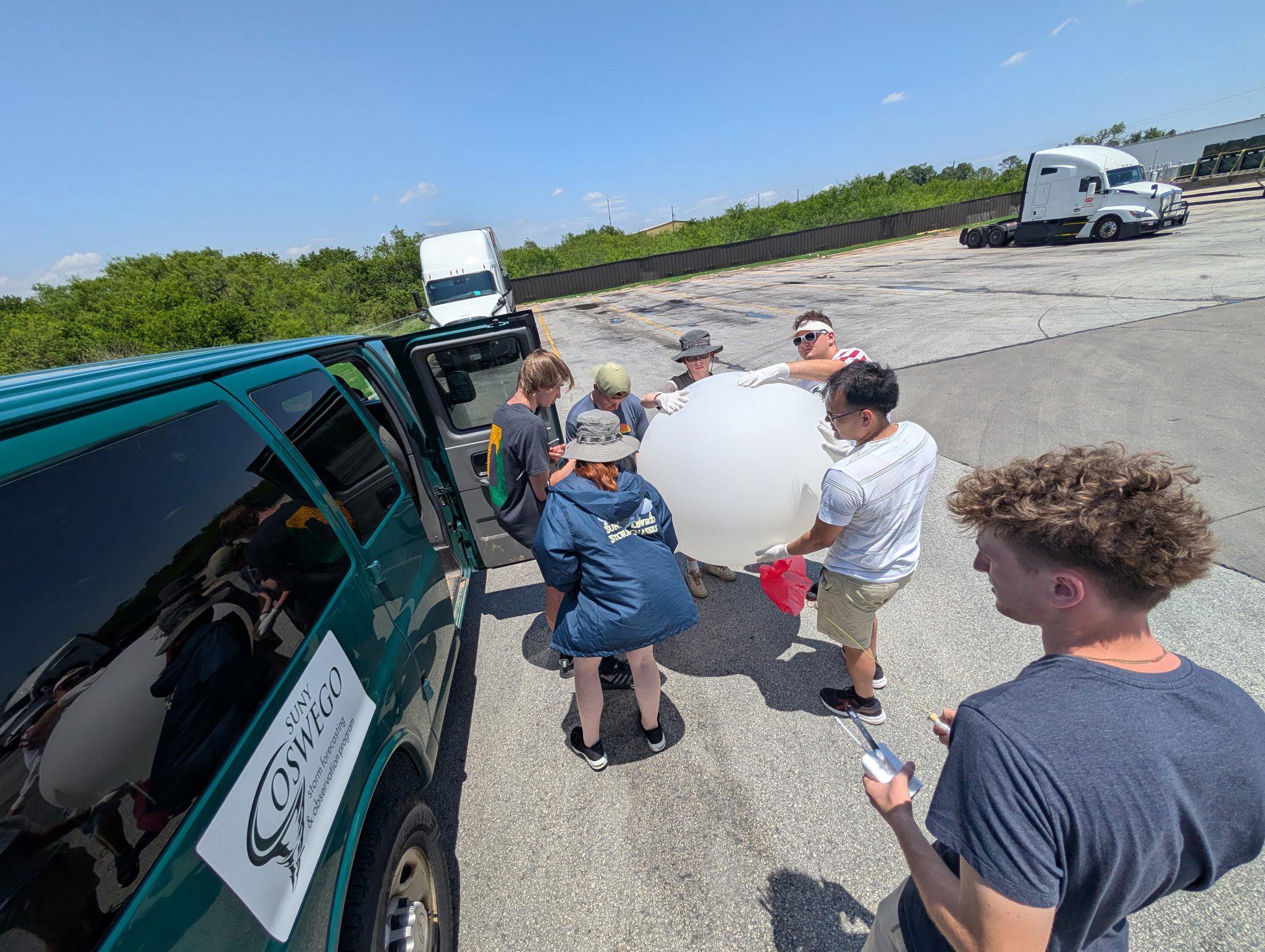
SUNY Oswego storm chasers launch a weather balloon with instrumentation on June 3 near Wichita Falls, Texas. (Photo courtesy of x.com/oswegochasers)
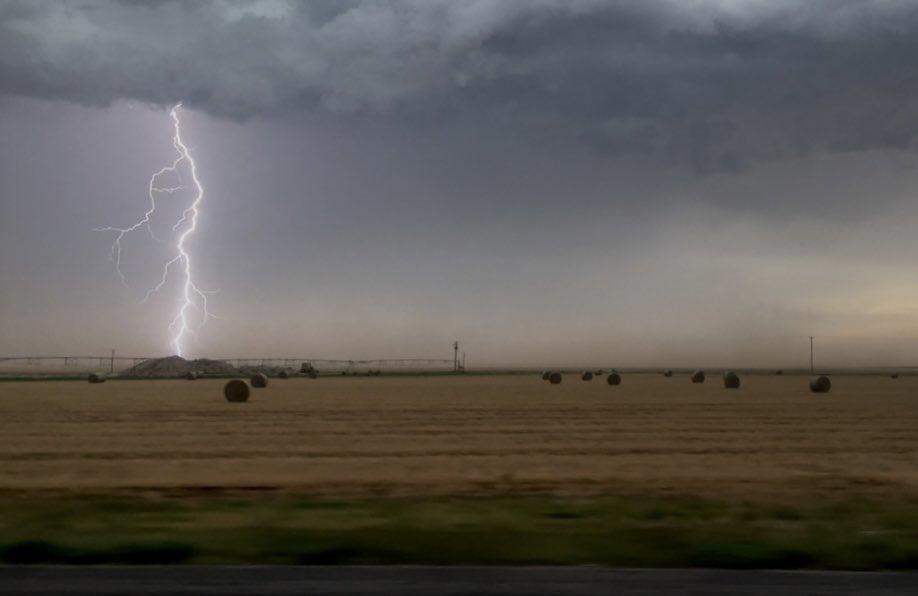
Students and instructors from SUNY Oswego’s storm-chasing class caught a lot of severe weather when traveling through northwest Texas on May 29. (Photo by Sarah Gryskewicz)
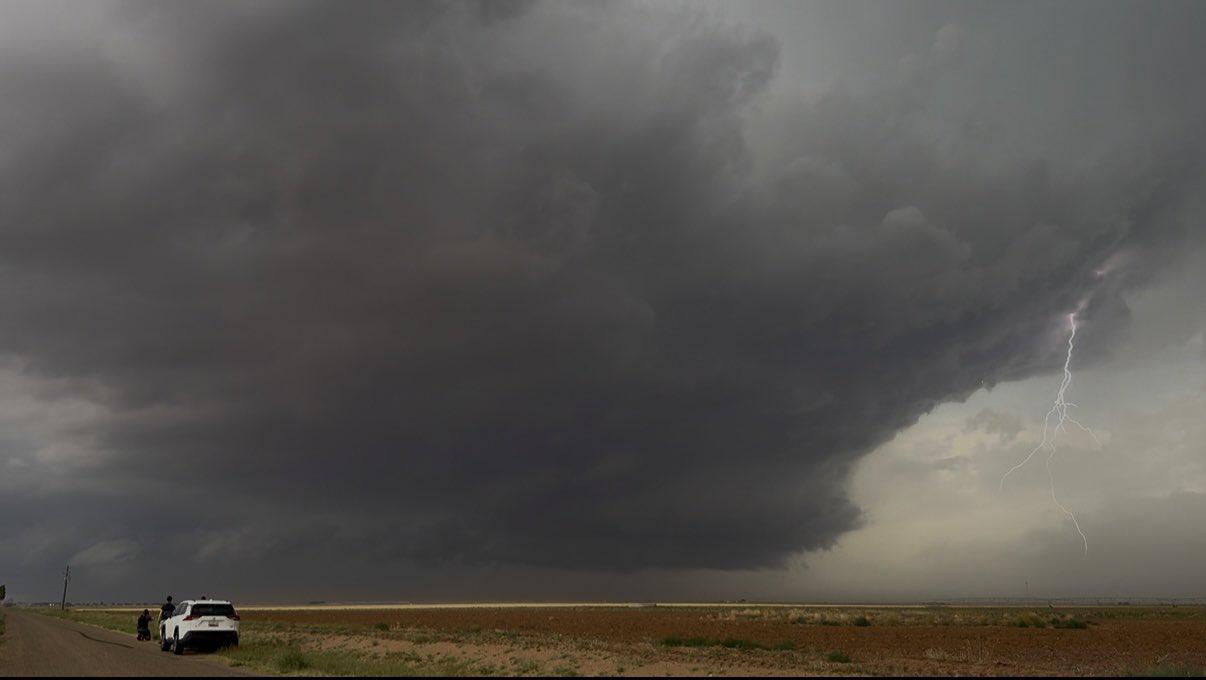
SUNY Oswego’s storm-chasing team observed severe weather on May 29 including a massive supercell with lightning near Lamesa, Texas. (Photo by Zoe Bush)
